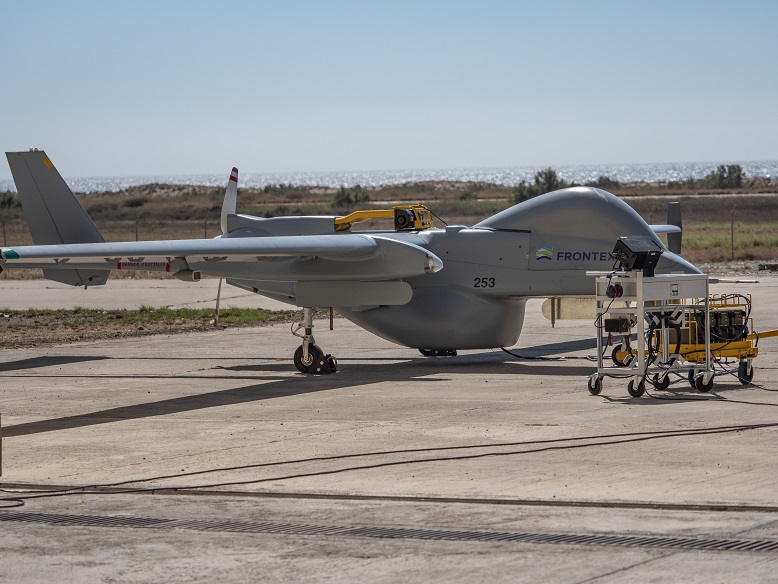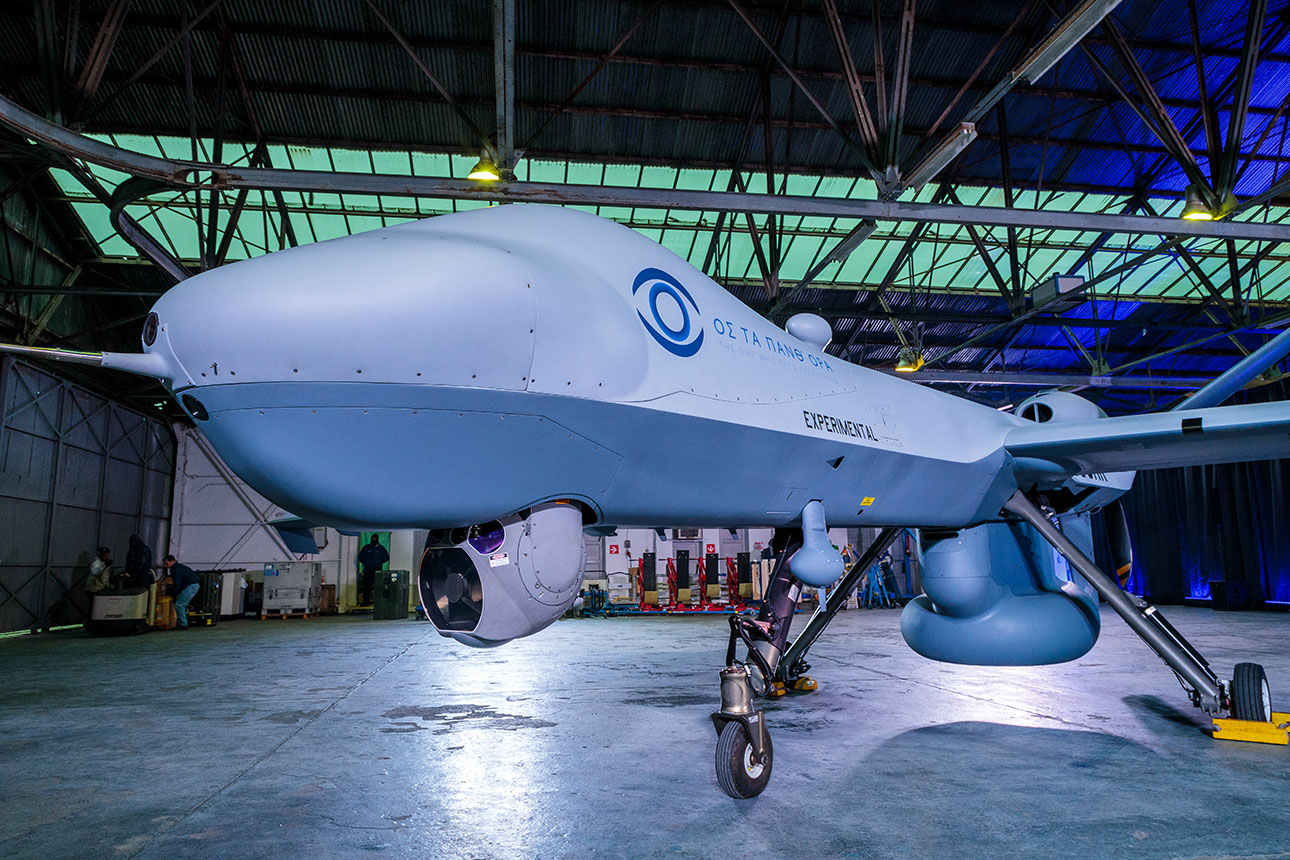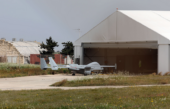For the next two years, the EU Commission is looking for an operator of large drones at airports in Malta, Italy or Greece. They should remain in the air for at least 20 hours and carry up to 230 kilograms of surveillance equipment. The high requirements are likely to lead to a competition between companies from the USA and Israel.
The new Frontex regulation came into force on 4 December. The border agency of the European Union wants to build up a “Standing Corps” of 10,000 police officers by 2027. In this way, Frontex is to become a “European Border Police” and will be given powers that were previously reserved for the EU member states. The agency, based in Warsaw, can now conduct its own operations and use police coercive measures. This affects joint operations at the EU’s external borders as well as deportations.
At the heart of the new regulation is the procurement of its own equipment. The multiannual financial framework, in which the EU determines the distribution of its financial resources until 2027, has not yet been adopted. According to current plans, around 9.5 billion euros have been reserved for Frontex in the seven-year budget, 3.5 billion of which for the new border troops. A large part of the money, around 2.2 billion, will be spent on aircraft, ships and vehicles.
Drones for 50 million euros
The establishment of the “European Border Police” includes the stationing of long-endurance drones in the central and eastern Mediterranean. Frontex has initiated a European call for tenders, which ended last Friday. The company is looking for flights from Malta, Italy or Greece. The contractor will also provide ground stations to receive the surveillance data. Frontex estimates the total cost at 50 million euros. The contract has a duration of two years and can be renewed twice for one year.

The desired drones are described as MALE class (Medium Altitude Long Endurance). According to Frontex, the aircraft’s endurance should be at least 20 hours. The requirements include flying in all airspaces, in all weather conditions and at day and night.
For surveillance missions, the drones carry electro-optical cameras, thermal imaging cameras and so-called daylight spotter to track moving targets. Further equipment includes systems for locating mobile and satellite telephones. For rescue at sea, the drones will also be able to receive emergency call transmitters with which newer life jackets are equipped.
Frontex has already tested long-range drones
Frontex specifies the required payload as at least 230 kilograms. This greatly limits the number of possible suppliers. For example, the Israeli “Heron 1”, which Frontex has already tested and which is also flown by the German Armed Forces, carries 250 kilograms. The “Falco” of the Italian armaments company, which Frontex had also flown for months on trial, can only carry half as much and is thus out of the race.

General Atomics, which last week in Greece presented a new version of its “Predator” for maritime surveillance (“SeaGuardian”), might therefore be among the interested parties.
The US company thus meets one of the essential requirements for long-range drones in the Mediterranean. According to the tender, they shall be equipped with a maritime surveillance radar and a system for receiving position data from larger ships.
First operation off the Greek coast
The EU border agency could start its drone flights in the first quarter of next year. Until then, Frontex will use the service of the European Maritime Safety Agency (EMSA), which offers European countries the use of drones of various sizes. First of all, the Icelandic government made use of the service.
Recently, the EU Commission published a list of other interested countries. According to the answer to a parlamentarian question, Bulgaria, France, Great Britain, Lithuania, the Netherlands, Spain and Portugal have requested EMSA drones for next year.
Frontex flies the drones ordered from EMSA off the Greek coast. Apart from this, the Greek government also want to use drones from the Maritime Safety Agency.
Information for other users
All information is transmitted in real time to Frontex situation centres. They feed into the EUROSUR surveillance network, which in turn belongs to the “Common Pre-Frontier Intelligence Picture” (CPIP). This “pre-frontier area” can – e.g. with satellite surveillance – extend far into the African continent. The Frontex drones will operate within a radius of up to 250 nautical miles. This would allow them to fly off the coasts of Tunisia, Libya and Egypt.

The tender also calls for a “Remote Information Portal” to share the reconnaissance data with other users. Corresponding situation centres will be named in the individual Frontex missions. In this way, the collected information can also be made available to the coastguards in North Africa. Libya is the first third country to be connected to a European Mediterranean surveillance system.
The Geneva Convention on Refugees and the Council of Europe’s Convention on Human Rights prohibit refoulement. States may not return people to countries where there is a risk of inhuman or degrading treatment. Frontex could circumvent the ban on such “push backs” by cooperating with the Libyan coastguard. Sea rescue organisations therefore speak of “pull backs”.
Image: Demonstration of the “SeaGuardian” in Larissa/ Greece (all rights reserved General Atomics).




